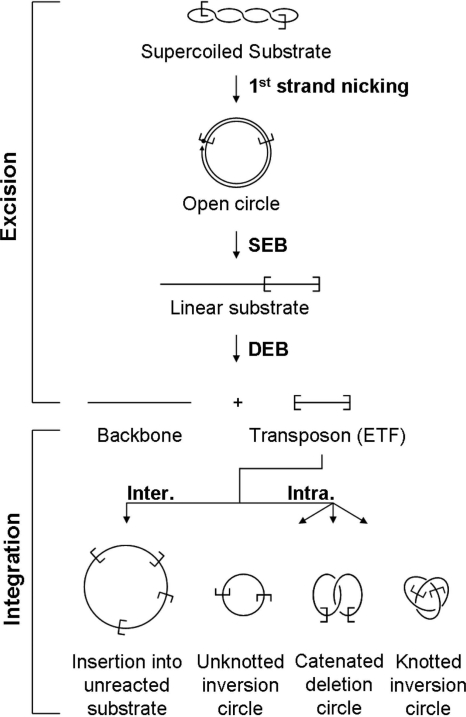FIG. 1.
The Hsmar1 transposition reaction. A schematic representation of the different steps of a mariner transposition reaction using a supercoiled plasmid substrate. First-strand nicking at one transposon end generates an open circular product in which the 5′ end of the transposon is separated from the donor sequence. Second-strand nicking exposes the 3′ OH at the transposon end, yielding the single-end-break (SEB) product. A similar sequence of nicks at the other transposon end yields the double-end-break (DEB) products, which are the plasmid backbone plus the excised transposon fragment (ETF). Intermolecular (Inter.) insertions may target any DNA present in the reaction, such as an unreacted donor plasmid (as illustrated here). Intramolecular (Intra.) targets, within the transposon itself, generate a series of transposon circles, which may be knotted or catenated if supercoils have been trapped between the target site and the transposon end. For further details see references 6 and 9.

